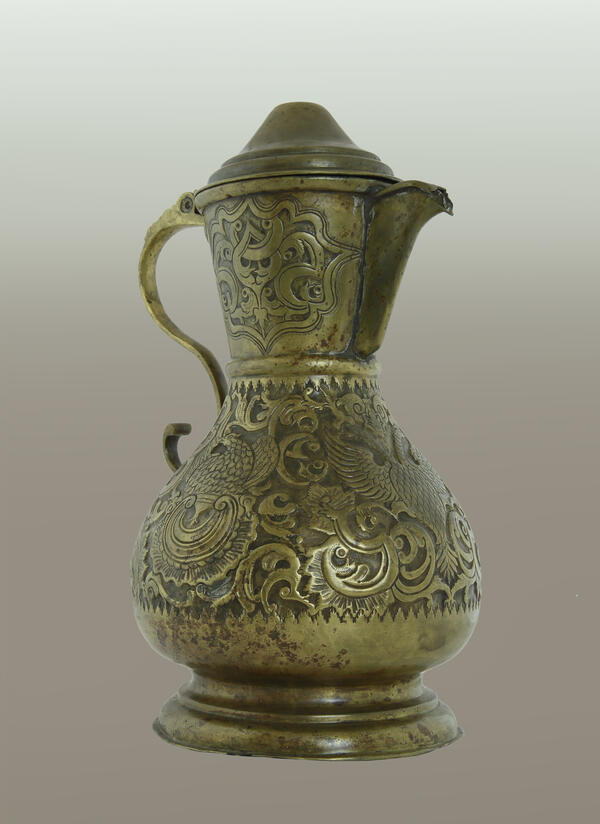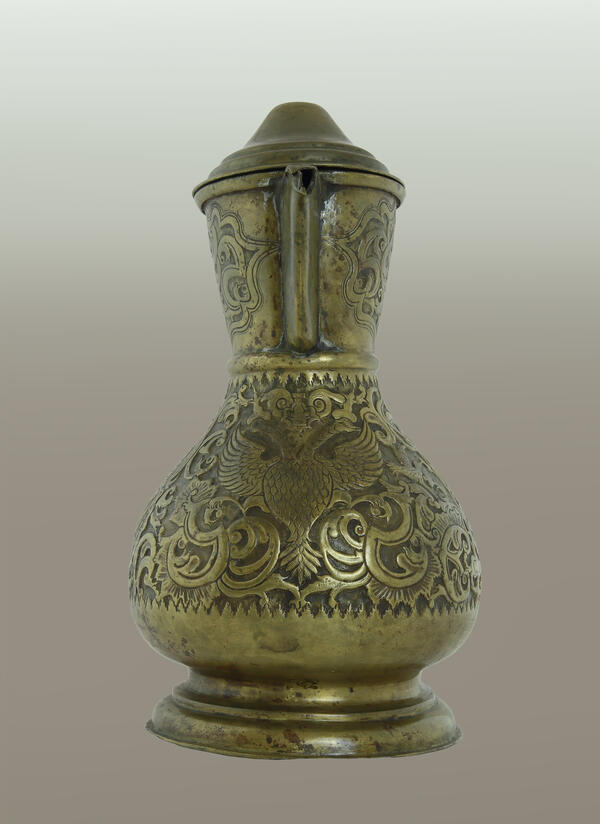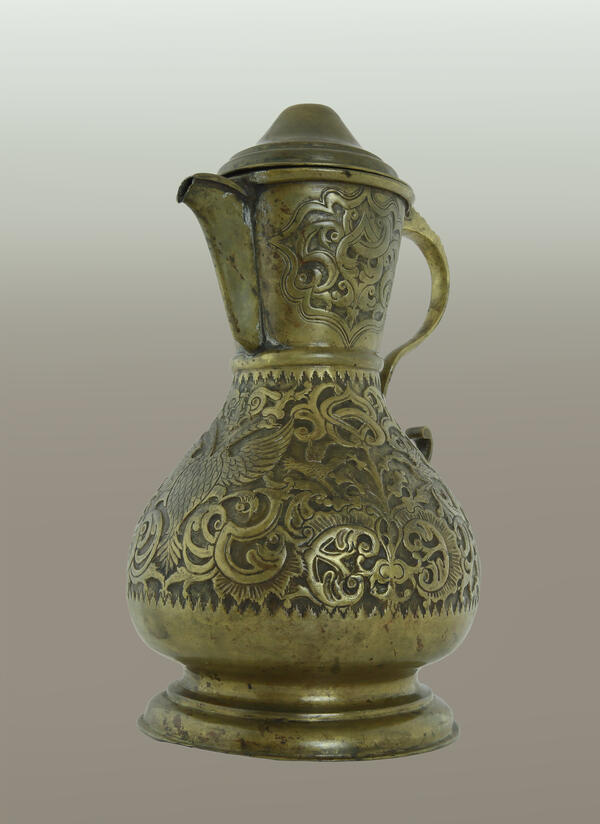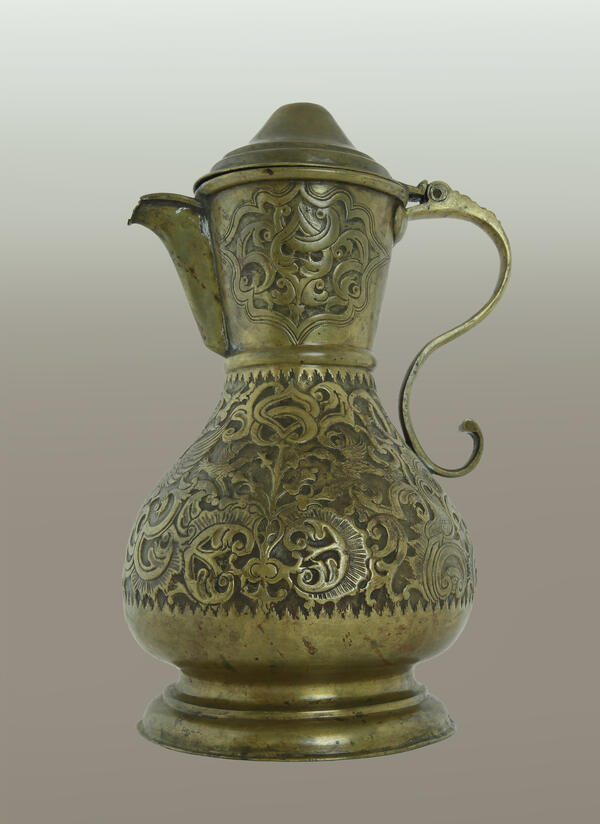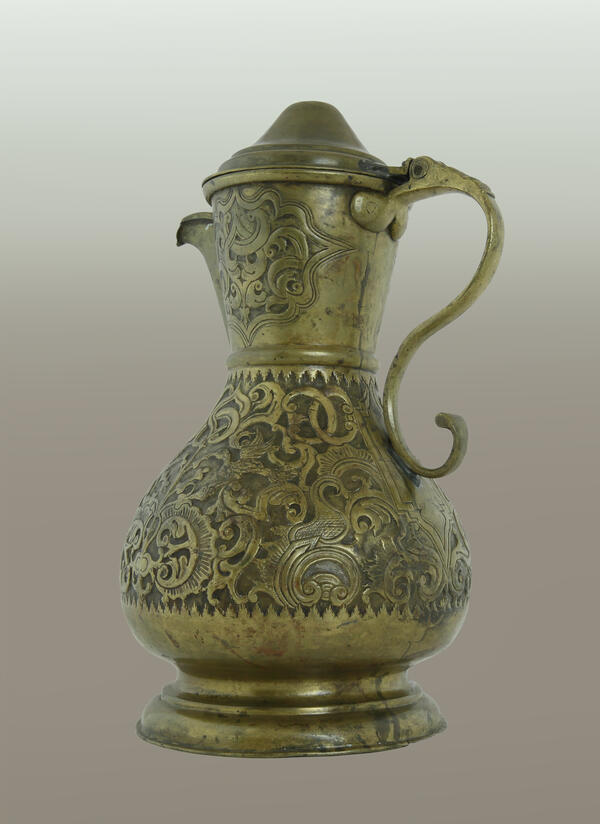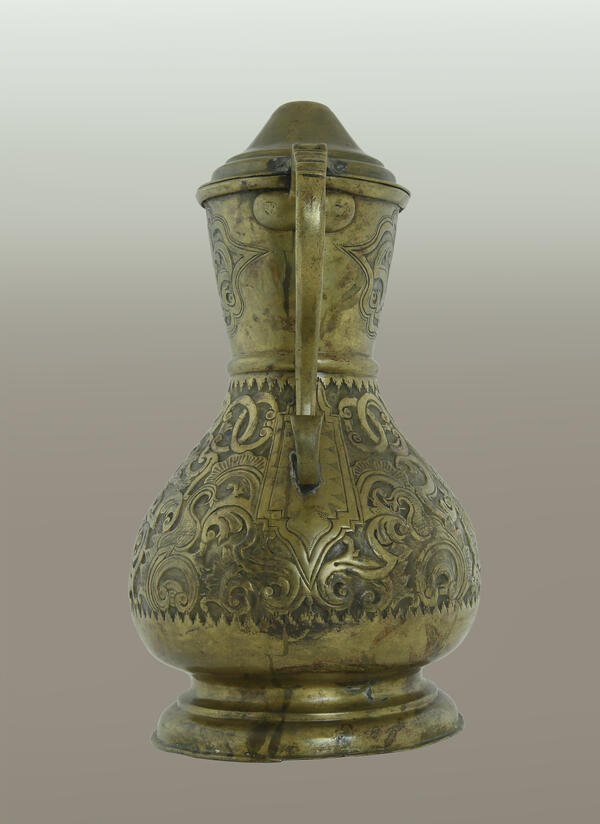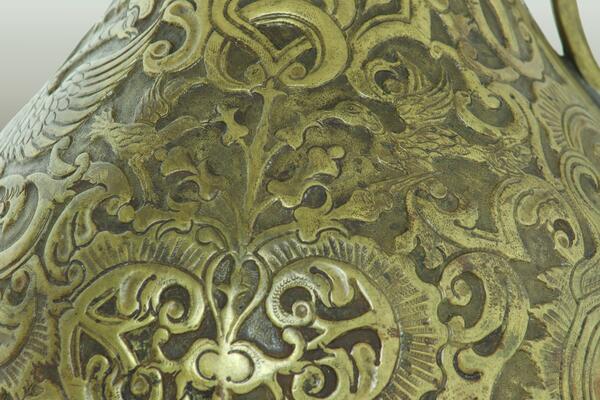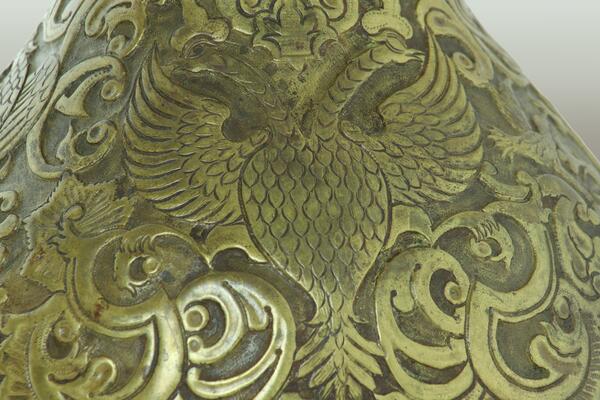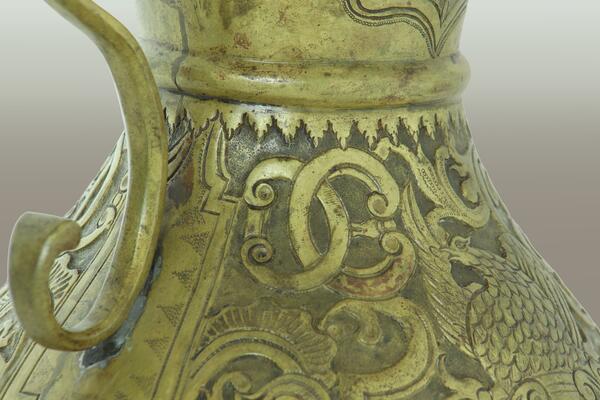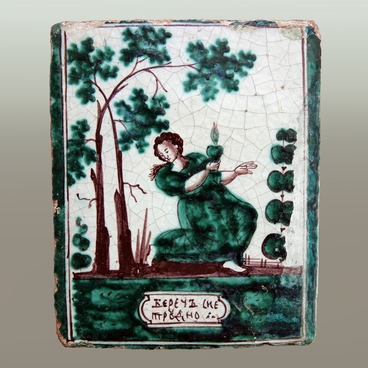In the 18th century, the Ural factories actively produced dishes and household utensils from copper and brass. The wares came in huge quantities and were distributed to different regions of the country. The collections of various museums have preserved a large number of works of the Ural “kotelniki” — this was the old term to refer to people who made objects from copper. The Russian Museum was no exception. The folk art collection of the Russian Museum houses a kumgan, a narrow-necked vessel (jug) for water, made in the 1770s at the Irginsky plant of the Osokins. The plant was located in the Western Urals and was a well-known center that produced metal utensils and household items. The factories of the Osokins were a worthy competitor to the famous Demidov enterprises.
The item came to the Russian Museum from the collection of the State Hermitage in 1938. Before that, this kumgan was kept in the museum of the Central School of Technical Drawing of Baron Alexander Ludwigovich von Stieglitz. The product was purchased in 1917 in Mikhail Savostin’s antique shop “Ancient Things” in St. Petersburg.
The kumgan has a pear-shaped, slightly flattened body connected by a ridge with a high neck, a beak-shaped spout and a bell-shaped lid. It is placed on a high bevelled base. The kumgan is richly decorated with various details — floral scrolls, “flaming” and “eye” rocaille, the “mesh” and other elements. Floral and geometric motifs were typical in copper and especially silverware of that period. And the images of birds have a typical Osokin interpretation. This is a double-headed eagle, located under the spout, and two birds flanking the tree.
Such compositions bring order into the ornamental design of the product. The Ural craftsmen displayed their observation skills in these works — the artisans managed to reproduce the typical habits of birds and the features of their external appearance in almost all the plots. However, this does not mean that the Osokin design is characterized as naturalistic. All images are united by a common decorative design. None of them violate the general principle.
The item came to the Russian Museum from the collection of the State Hermitage in 1938. Before that, this kumgan was kept in the museum of the Central School of Technical Drawing of Baron Alexander Ludwigovich von Stieglitz. The product was purchased in 1917 in Mikhail Savostin’s antique shop “Ancient Things” in St. Petersburg.
The kumgan has a pear-shaped, slightly flattened body connected by a ridge with a high neck, a beak-shaped spout and a bell-shaped lid. It is placed on a high bevelled base. The kumgan is richly decorated with various details — floral scrolls, “flaming” and “eye” rocaille, the “mesh” and other elements. Floral and geometric motifs were typical in copper and especially silverware of that period. And the images of birds have a typical Osokin interpretation. This is a double-headed eagle, located under the spout, and two birds flanking the tree.
Such compositions bring order into the ornamental design of the product. The Ural craftsmen displayed their observation skills in these works — the artisans managed to reproduce the typical habits of birds and the features of their external appearance in almost all the plots. However, this does not mean that the Osokin design is characterized as naturalistic. All images are united by a common decorative design. None of them violate the general principle.

